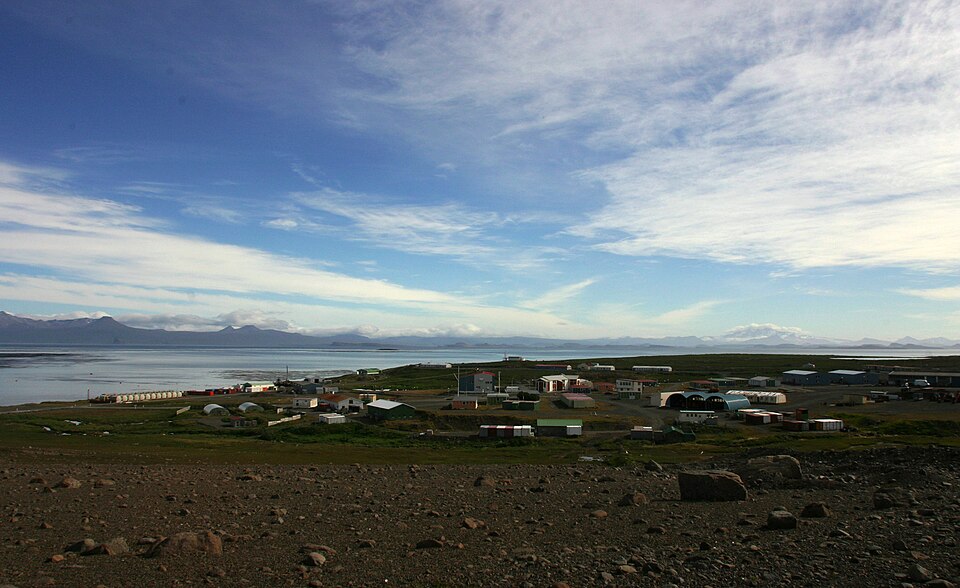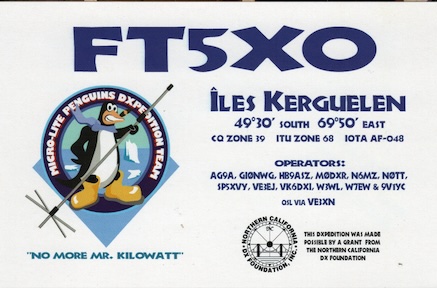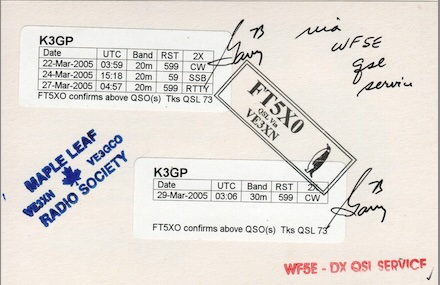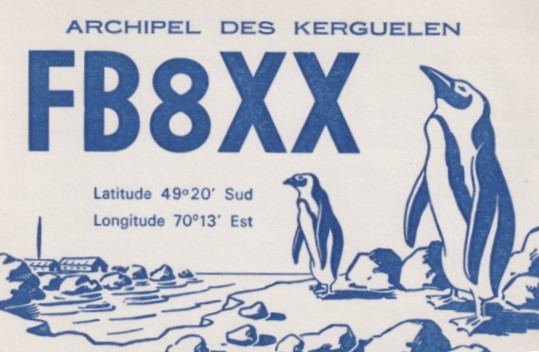Find out about current attempts to put the Kerguelen Islands back on the air
OnAllBands’ exploration of the rarest DXCC locations takes us next to the chilly, windswept Kerguelen Islands—part of the French Southern and Antarctic Lands in the Southern Indian Ocean and one of the most remote spots on the planet. The closest inhabited land to the Kerguelen archipelago is Madagascar, 1,8oo miles away. To put this in perspective, that’s about the distance from Tallmadge, Ohio, DX Engineering headquarters, to Butte, Montana.
It’s no wonder that the Kerguelen Islands was the eighth-ranked Most Wanted DXCC Entity per Clublog as of June 2025.
About Kerguelen
The islands were discovered by French navigator Yves-Joseph de Kerguelen-Tremarec in 1772. Four years later, Captain James Cook, upon seeing Kerguelen’s bleak terrain, coined the archipelago as the “Desolation Islands.” An attempt in the early 1900s to develop a permanent settlement on the island based on raising sheep failed due to the harsh climate. Five anonymous gravestones from the settlement still exist.
The Kerguelen archipelago consists of one main island, La Grande Terre, and around 300 smaller islands and islets covering 2,786 square miles. Measuring 93 miles east to west and 75 miles north to south, La Grande Terre is home to the Port-aux-Français scientific base, which includes research facilities, satellite tracking station, dormitories, hospital, pub, library, and chapel. Depending on the season, anywhere from 50 to 120 scientists, engineers, military personnel, and support staff are stationed there. From 1968-81, a site near Port-aux-Français served as a launching area for French, American, and French-Soviet research rockets.
The Kerguelen Islands are visited four times a year by the “Marion Dufresne” vessel, which departs from Réunion Island to provide supplies to the Port-aux- Français as well as research facilities on Crozet, Amsterdam, and Saint-Paul islands. What’s it like living and working on the Kerguelen Islands? Watch this fascinating video.

The Kerguelen Islands and surrounding rough but ice-free waters are home to a diverse mix of mammals and birds, including southern elephant seals; humpback whales; dolphins; king, gentoo, rockhopper, and macaroni penguins; Kerguelen petrels and shags; and albatrosses. Additionally, there are several species that were introduced to the islands over the years. Among these are Bizet sheep introduced on the island by France in 1952 to provide meat for personnel at Port-aux-Français; mouflons (mountain sheep); reindeer; and rabbits.
Many Hurdles to Activate
Why is Kerguelen so rarely on the air? In short, it’s an expensive undertaking, hard to get to, and logistically complicated in terms of getting operators and gear safely on and off the island. Further, environmental restrictions designed to protect the islands’ wildlife and avian population make getting permission to operate from there a challenge. Permission must be granted by officials who govern the French Southern and Antarctic Lands (in French, the “Terres Australes et Antarctiques Françaises,” or TAAF).
The last major DXpedition from Kerguelen was the 11-day FT5XO activation by the Micro-Lite Penguins team in March 2005. The 12-operator effort recorded nearly 68,000 SSB, CW, and Digital QSOs. There have been several one-person Kerguelen activations over the years by operators, FT4XU and FT4XW, for example, who combined their scientific research on the island with DXing.
Take a moment to read this enlightening article by FT5XO DXpedition leader James Brooks, 9V1YC, from the spring/summer Northern California DX Foundation Newsletter.
Here’s how 9V1YC described Kerguelen’s less-than-hospitable environs: “Kerguelen is not exactly the most popular island in the world to visit. It’s not near anywhere, it’s not on the way to anywhere, and it’s not really anywhere anyone would want to go to. It’s a place where the wind can reach typhoon strength on any ordinary day, and it’s a place where the weather is almost always cold, wet and miserable.”
George, K3GP, DX Engineering customer/technical support specialist, made CW, SSB, and RTTY contacts with the FT5XO team.


Wayne, K8FF, DX Engineering customer/technical support specialist, reached the FB8XX DXpedition in June 1972 on SSB. Amateur radio operators on Kerguelen all used the general FB8XX call sign from 1950-73. It has been under the FT#X prefix since 1984.

On the Air Soon?
Crozet Island, another of the French Southern and Antarctic Lands, was activated by Thierry Mazel, F6CUK, from late 2022 to February 2023. The one-man FT8WW DXpedition, sponsored by DX Engineering, resulted in more than 50,000 QSOs (including 1,300 by satellite), bumping Crozet Island from #3 most wanted to #27. F6CUK and Pascal, F8TRT, are hoping to activate Kerguelen this year but are awaiting approval from the TAAF.
“With a departure planned between December 2025 and March 2026, it is essential to dispatch the trunks by mid-August,” F6CUK wrote.
Get the latest details on the possible Kerguelen 2025 DXpedition from the FT1X official website.

Check out these OnAllBands articles on the current top-seven most-wanted entities:
- Peter I Island
- Johnston Island
- Pratas Island and Kure Island
- North Korea, Scarborough Reef, and San Felix Islands
What’s left on the top-ten list? We’ll be covering Aves Island and recently added Turkmenistan, which climbed into the top ten ahead of Bouvet Island. Stay tuned!
In the meantime, visit DXEngineering.com for everything you need to upgrade your station to make sure you’re ready when entities like Kerguelen are in play. You’ll find transceivers, antennas, amplifiers, CW keys and paddles, headsets and speakers, reference books like “Ham Radio DX: A Complete Guide,” and much more.
***
Editor’s Note: Every month, DX Engineering features QSL cards from our team members’ personal collections. To highlight upcoming DXpeditions, we’ll be displaying a few of our favorite cards along with details about what it took to make these contacts. We’re excited to share some of the special cards pulled from the thousands we’ve received over the years. We look forward to seeing your cards as well!

